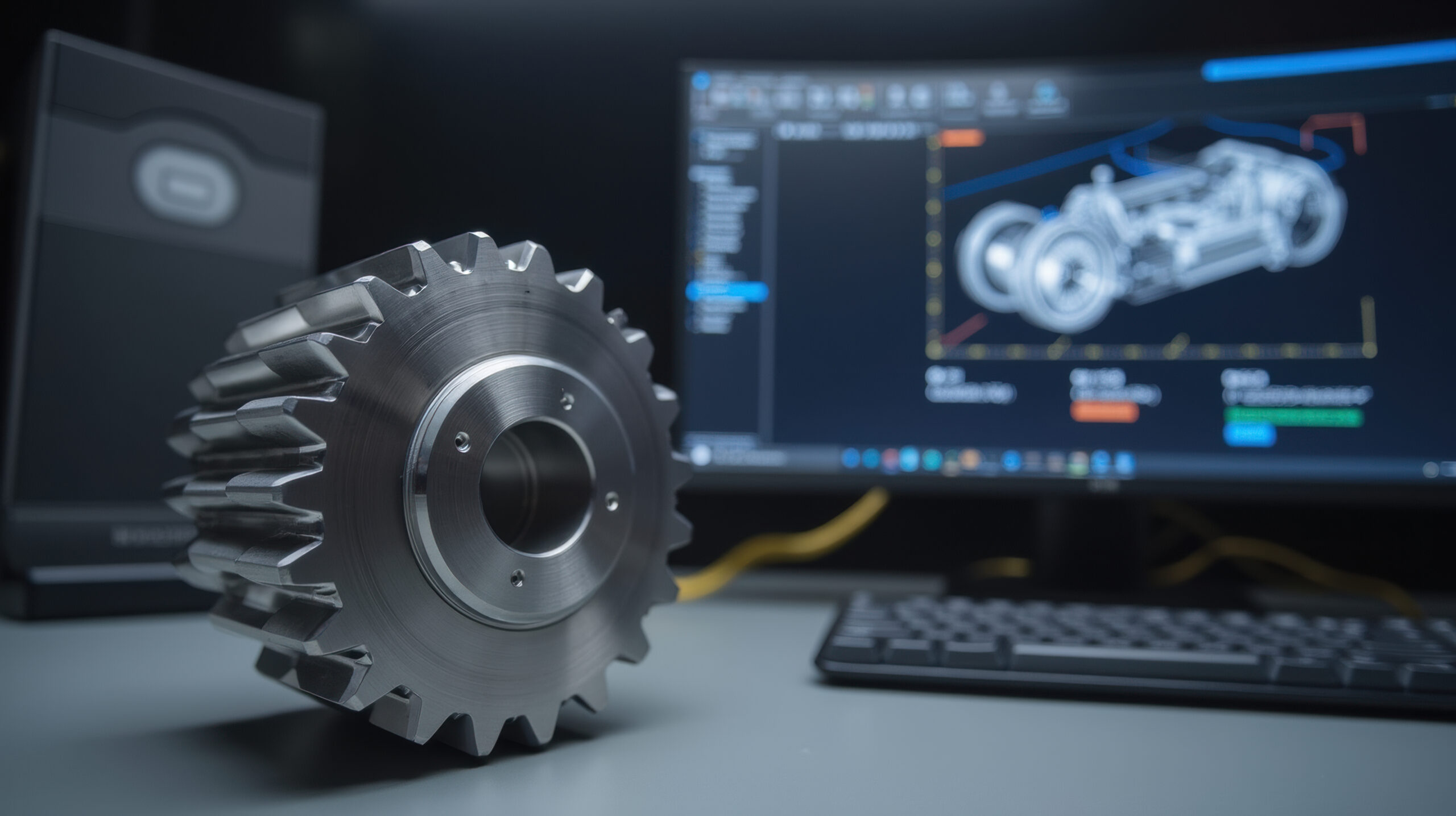Introduction
Prototyping is the bridge between concept and reality—the critical phase where ideas become tangible objects you can hold, test, and evaluate. Yet many entrepreneurs and product developers don’t fully understand prototyping options, costs, or best practices. This comprehensive guide demystifies product prototyping, helping you make informed decisions that accelerate development while controlling costs.
Why Prototyping Matters
Prototypes serve multiple essential purposes in product development. They validate design concepts, test functionality, evaluate ergonomics, assess manufacturing feasibility, and serve as communication tools with stakeholders, investors, and manufacturers.
Design Validation
CAD models look perfect on screen, but physical reality often reveals problems. Is that button easy to press? Does the handle feel comfortable? Is the product the right size? Prototypes answer these questions definitively.
Functional Testing
For products with mechanical functions, prototypes enable testing under real-world conditions. Does that latch engage reliably? Will the mechanism survive thousands of cycles? Is the product durable enough? Testing prototypes reveals weaknesses before expensive manufacturing commitments.
User Feedback
Watching people interact with physical prototypes provides invaluable insights. Users might struggle with features designers thought were obvious. They might love aspects designers considered minor. This feedback shapes products that genuinely meet user needs.
Manufacturing Preparation
Prototypes help manufacturers understand your product and identify potential production issues. A physical prototype communicates design intent far more effectively than drawings alone. It also allows manufacturers to practice assembly procedures and estimate accurate production costs.
Fundraising and Marketing
Investors and customers respond far more positively to physical prototypes than conceptual presentations. A well-executed prototype demonstrates commitment, validates feasibility, and makes your vision tangible. For crowdfunding campaigns especially, professional prototypes are essential.
Prototyping Methods Explained
3D Printing (Additive Manufacturing)
3D printing has revolutionized prototyping by making complex geometries affordable and fast. Multiple 3D printing technologies exist, each with different characteristics and applications.
Fused Deposition Modeling (FDM) is the most common and affordable method. Desktop FDM printers cost under $1,000 and produce functional parts in materials like PLA and ABS. Professional FDM printers handle engineering plastics like nylon and polycarbonate. FDM works well for functional prototypes, fit-check models, and iteration cycles.
Stereolithography (SLA) and Digital Light Processing (DLP) produce much higher resolution parts with smooth surfaces. These methods use photopolymer resins cured by lasers or projectors. SLA excels for visual prototypes, intricate details, and presentation models. The surface finish approaches injection molded quality.
Selective Laser Sintering (SLS) produces strong, functional parts in nylon without support structures. SLS works well for complex assemblies, functional testing, and bridge manufacturing for small production runs. Parts have slightly rough surfaces but excellent mechanical properties.
Multi Jet Fusion (MJF) and other powder bed fusion methods deliver production-like parts with excellent properties and surface finish. These higher-end methods bridge the gap between prototyping and low-volume manufacturing.
CNC Machining
CNC machining cuts parts from solid material blocks using computer-controlled tools. This subtractive manufacturing method produces parts in actual production materials—metals, engineering plastics, and composites—with excellent accuracy and surface finish.
CNC machining excels for metal prototypes, functional testing in production materials, and designs that will be CNC machined in production. It’s more expensive than 3D printing for complex geometries but often cheaper for simple parts. Machined prototypes provide the most accurate representation of production parts.
Vacuum Casting (Urethane Casting)
Vacuum casting creates production-like plastic parts using silicone molds and polyurethane resins. The process starts with a master pattern (usually 3D printed), creates a silicone mold around it, then casts multiple copies in urethane resins that mimic production plastics.
Vacuum casting produces excellent surface finish, accurate colors, and production-like material properties. It’s ideal for visual prototypes, trade show models, and market testing. Silicone molds last for 15-25 castings, making vacuum casting economical for small quantities (10-100 units).
Sheet Metal Prototyping
For products with sheet metal components, prototype parts can be cut and formed using CNC cutting, laser cutting, waterjet cutting, and manual forming. These methods produce functional metal prototypes quickly and affordably, though with somewhat rougher finish than production stampings.
Rapid Tooling
For higher-volume prototyping or bridge manufacturing, rapid tooling creates simplified production tools quickly and affordably. Aluminum molds for injection molding cost 1/3 to 1/2 of production steel molds but last for thousands of parts. 3D printed molds work for very small quantities (100-1000 parts) in some applications.
Choosing the Right Prototyping Method
Selecting appropriate prototyping methods depends on your specific goals, timeline, and budget. Often, multiple methods are used in sequence as products progress through development stages.
Concept Prototypes
Early in development, speed and cost matter more than perfection. Quick 3D printed prototypes allow rapid iteration on form factor, ergonomics, and basic functionality. Use inexpensive FDM printing for these early models. Focus on answering specific design questions rather than creating perfect representations.
Functional Prototypes
When testing mechanical functions, durability, or performance, prototypes must use appropriate materials and methods. CNC machined metal parts, SLS nylon parts, or cast urethane parts provide realistic mechanical properties. Assemble these prototypes like production units to test assembly procedures.
Visual Prototypes
For presentations, photography, or trade shows, appearance matters most. SLA or PolyJet 3D printing delivers smooth surfaces and fine details. Vacuum cast parts provide production-like appearance with accurate colors and finishes. Professional finishing—sanding, priming, painting—transforms prototypes into presentation-ready models.
Pre-Production Prototypes
Before committing to full production tooling, create pre-production prototypes using rapid tooling or bridge manufacturing methods. These prototypes validate final designs, enable comprehensive testing, and serve as production samples for manufacturers.
Prototyping Costs and Timelines
Prototyping costs vary dramatically based on size, complexity, methods, quantities, and finishing requirements. Understanding typical costs helps with budgeting and decision-making.
3D Printing Costs
Simple FDM printed parts might cost $50-200 depending on size. Complex SLA parts range from $100-500. Large SLS or MJF parts can cost $500-2000. Most 3D printed prototypes deliver within 1-5 business days.
CNC Machining Costs
Machined prototypes typically cost $200-2000 per part depending on complexity, material, and tolerances. Simple parts might cost less, while complex multi-axis machining can cost more. Lead times range from 3-10 business days typically.
Vacuum Casting Costs
Master patterns cost $200-1000. Silicone molds cost $500-2000. Cast parts cost $50-300 each depending on size and complexity. The complete process takes 2-3 weeks typically, including pattern creation, mold making, and casting.
Assembly and Finishing Costs
Professional finishing—sanding, painting, plating, assembly—adds significant cost but creates presentation-quality prototypes. Budget $200-1000+ for professional finishing depending on complexity.
Prototyping Best Practices
Start Simple and Iterate
Don’t try to create perfect prototypes initially. Start with simple models that answer specific questions, then iterate based on what you learn. Multiple cheap prototypes provide more value than one expensive prototype.
Test Specific Hypotheses
Every prototype should test specific aspects of your design. Create different prototypes for different purposes: form-factor studies, functional testing, user testing, manufacturing validation. Trying to make one prototype serve all purposes usually means it serves none well.
Use Appropriate Fidelity
Match prototype fidelity to your current development stage and goals. Early concepts don’t need perfect surface finish. User testing prototypes need good ergonomics but not production materials. Investor presentations need visual appeal but not full functionality. Appropriate fidelity saves money and time.
Document Everything
Photograph prototypes thoroughly. Document how they were made. Record test results, user feedback, and observations. This documentation guides future iterations and captures valuable learning.
Work with Experienced Partners
Professional prototyping services have expertise, equipment, and materials that dramatically improve results. They can recommend appropriate methods, identify potential issues, and deliver superior quality. For critical prototypes, professional support is worth the investment.
Common Prototyping Mistakes
Waiting Too Long
Many teams spend excessive time perfecting CAD models before creating physical prototypes. Physical reality always differs from digital models. Create rough prototypes early to identify problems quickly.
Over-Investing in Early Prototypes
Conversely, some teams spend heavily on elaborate early prototypes before designs are mature. These expensive prototypes become obsolete quickly as designs evolve. Save high-investment prototypes for later development stages.
Ignoring Manufacturing Constraints
Prototypes that ignore manufacturing constraints teach nothing about production feasibility. Even early prototypes should consider basic manufacturing principles. Later prototypes should increasingly reflect production methods and materials.
Insufficient Testing
Creating beautiful prototypes but testing them inadequately wastes their value. Subject prototypes to realistic use conditions. Test with actual users. Push prototypes to failure to understand limitations.
Advanced Prototyping Strategies
Multi-Method Approach
Sophisticated products often require multiple prototyping methods simultaneously. Perhaps 3D printed housings, CNC machined metal brackets, and off-the-shelf electronic components. Combining methods leverages each method’s strengths while controlling costs.
Progressive Fidelity
Plan a series of prototypes with increasing fidelity as development progresses. Early prototypes might be crude 3D prints. Middle prototypes use better materials and methods. Final prototypes use production-like processes. This progression manages costs while steadily increasing confidence.
Test Rigs and Fixtures
Sometimes testing specific aspects requires custom test rigs rather than complete prototypes. Creating fixtures that test one mechanism, one interface, or one function can be faster and cheaper than building complete units.
Conclusion
Prototyping is an investment that dramatically reduces development risk while accelerating progress. By understanding available methods, appropriate applications, costs, and best practices, you can make informed decisions that maximize prototyping value.
The key is viewing prototyping not as a single event but as an iterative process that progressively refines your product. Start early with simple prototypes. Test frequently and thoroughly. Learn from each iteration. Use appropriate methods and fidelity for each development stage.
Whether developing your first product or your fiftieth, thoughtful prototyping transforms uncertain concepts into validated designs ready for successful manufacturing and market launch.
External Backlinks:


No responses yet